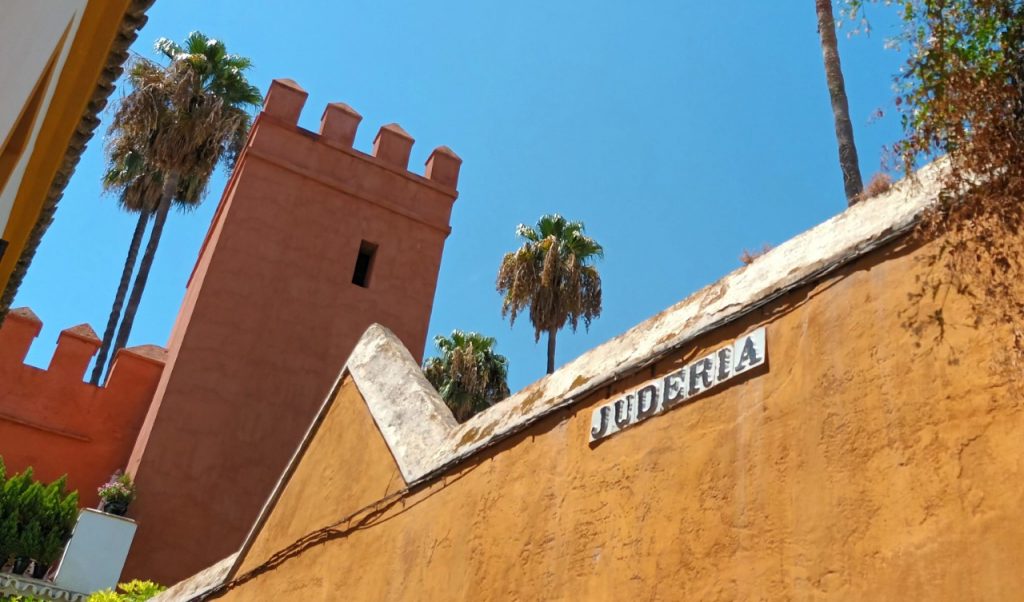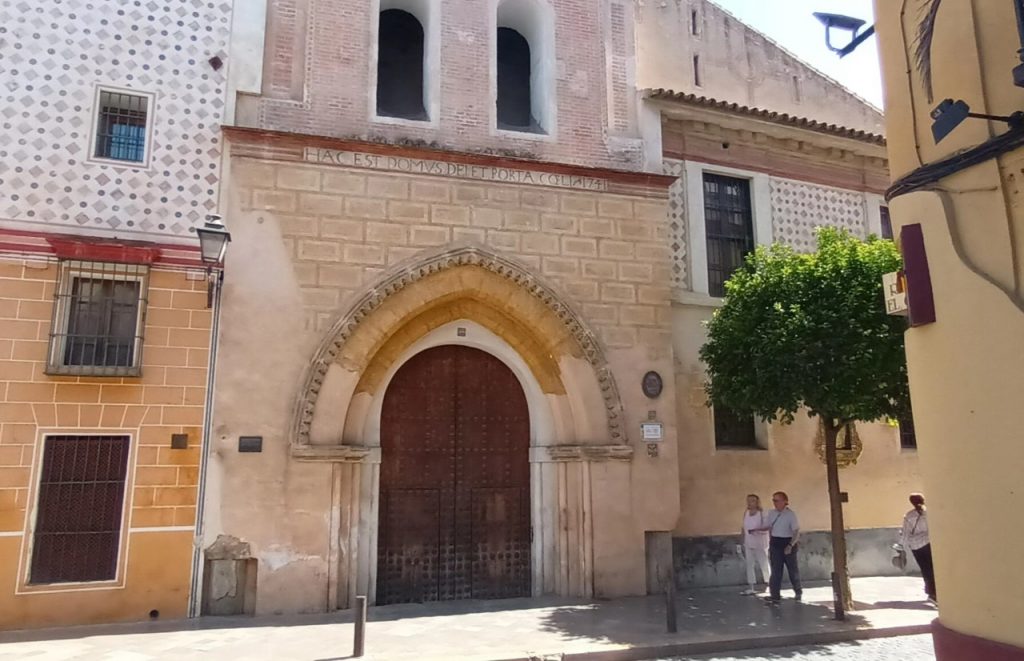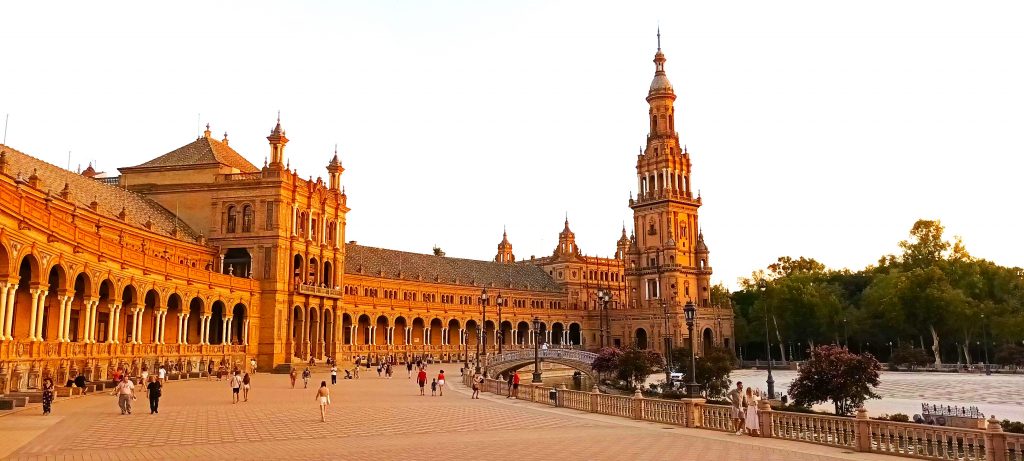Seville’s Santa Cruz quarter, protected by the Alcazar, was formerly the city’s famous judería.

If the English like to dine early compared to the French, they enjoy this meal at Spanish lunchtime. Which continues from tapas to tapas throughout the afternoon. Yes, it’s a bit of a cliché, but that’s the impression you’ll get as you walk through the old quarters of Iberian cities, with tourists and locals mingling and bequeathing to each other the prized spots on the café terraces. On the other hand, when it comes to visiting historical monuments, it’s best to be in bed early. And Seville is no exception to this rule.
The ancient synagogue of Seville is only open for a few hours a day, and then only for a few hours at a time. So it’s best to start your visit with this one. In the summer of 2022, our team went there at 11:15 a.m., Google announced that the place was open until noon, and in the end the synagogue had been closed since 11 a.m., postponing the visit until the next day. Was it a hasty departure of the faithful to anticipate lunch?

Despite the somewhat ironic tone of this presentation, we must admit that these extended visits to the city’s bistros were very pleasant. Of course, you won’t find places with such aberrant names as Houmous Kafka in Prague, but some establishments, with very tenuous links to the culinary customs of the old Jewish quarter, use the name juderia to attract tourists. The pleasure lies in the loss of time and space in these alleys with their pearly facades, so full of colour and history. And in the courtyards and interior gardens that a few doors allow you to admire.
The maze of streets and their evocative names give a good idea of what it was like in 1492. Be sure to stroll around the Calle de la Judería, Callejón del Agua, Calle des Levis, and the Calle de Santa María, which may have been the main street.

The name of the Calle de la Susona attests to an old legend concerning a converso uprising against the Inquisition led by a woman, La Susona. The whitewashed facades, flowers, and patios make this a charming quarter and give us an idea of daily life in Sepharad. Note, however, that the squares were opened up in the nineteenth century in order to make the quarter more airy.
Inside the cathedral , the pedestal of the Mausoleum built by Alfonso X for his father, Fernando III, has a Hebrew inscription giving the date of the king’s death according to the Hebrew calendar. The cathedral treasury has the silver keys given to King Fernando III by the Jews. They bear two inscriptions in Hebrew announcing that “God will open, the King will enter” and “the King of Kings will open, the King of the whole earth shall enter.”
Three seals belonging to Jewish figures in the twelfth century are on exhibit at the Archaeological Museum , and the Archives of the Indies has a copy of Abraham Zacuto’s perpetual almanac, used by Christopher Colombus and Vasco da Gama.

You can extend the visit to its magnificent monuments that defy time and reconcile cultures, neighbours of a few walls and centuries. Starting with the sumptuous Alcázar and its gardens, then along the different palaces and the university, you can spend a very pleasant end of the day at the Plaza de Espana. This monument, designed for the 1929 exhibition, is half-oval in shape and stretches for 200 meters. The artistic works, especially the ceramics, pay tribute to the diversity of the Spanish provinces and their key cities. While the little boat rides in front of the monument will amuse some, our team particularly enjoyed the impromptu shows on the steps, mainly flamenco.
The originality of the Plaza de Espana has inspired many filmmakers, with the location being used as a set for films as different as Lawrence of Arabia, Star Wars, and Sacha Baron Cohen’s The Dictator. The latter film, with its dialogue in Hebrew, brings a humorous Jewish touch to this place and this city, which today are symbols of a harmonious and generous meeting of cultures. Afterwards, take a walk in the park to the pretty little bridge protected by swans. On the way back, along the Paseo de las Delicias, you will come across the Torre del Oro, which once protected the city from invasion.